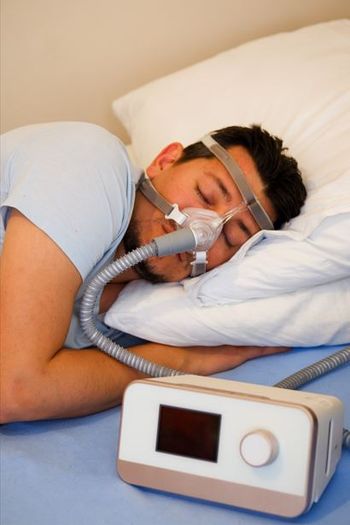
Might Obstructive Sleep Apnea Explain Your Patient’s Nightmares?
Consider OSA in your the differential diagnosis in patients who present with nightmarers. Continuous positive airway pressure (CPAP) can provide effective treatment.
Patients with obstructive sleep apnea (OSA) experience episodes of oxygen desaturation during their fragmented sleep and many have related nightmares. Reports of bad dreams involving feelings of suffocation and drowning are common among these patients, who often awake in fear or with palpitations.
Why you did you and your colleagues undertake this study?
We noticed that nightmares are relatively common among patients with OSA, Researchers had long hypothesized that a shortage of oxygen during sleep may provoke nightmares. However, the association between OSA and nightmares has not been well explored in patients who do not have an underlying psychiatric disorder. Moreover, the effect of CPAP-the gold standard of therapy for OSA-has not been well explored as a treatment option for nightmares.
We wanted to compare the clinical and polysomnographic characteristics of OSA patients with and without nightmares, and to prospectively study the effects of CPAP therapy on nightmares.
What did you find of significance?
We compared 99 patients (mean age, 47 years) who had OSA-associated nightmares with a matched group of 124 OSA patients without nightmares. Those with nightmares had significantly more apneic episodes during REM sleep.
Nightmares occur during REM sleep and are considered as REM-related parasomnia. We identified the number of apneic episodes during REM sleep and sleep interruption as independent predictors of nightmares.
The highlight of this study is the finding that nightmares disappeared in 91% of the patients who used CPAP versus 36% in patients who refused CPAP.
The bottom line: OSA should be considered in the differential diagnosis in patients who present with nightmares.
Would you speculate as to why patients predominantly described nightmares about suffocation or drowning?
Apneic episodes cause frequent sleep interruptions. When apnea occurs during dreaming, frequent sleep interruptions enhance dream recall. The choking attacks and the drop of oxygen during apneic episodes may affect the contents of the dreams, giving rise to nightmares. CPAP therapy eliminates apneic episodes and sleep interruption, and helps the patient maintain good oxygen saturation; hence nightmares disappear.
Do you have any theories about why CPAP didn’t help every patient with OSA-related nightmares?
Many conditions can provoke nightmares, including psychiatric disorders, as can some medications. Although we did our best to exclude patients with conditions known to provoke nightmares, it is quite possible that those who did not respond to CPAP have underlying conditions other than OSA.
Reference
1. BaHammam A, Al-Shimemeri S, Salama R, Sharif M. Clinical and polysomnographic characteristics and response to continuous positive airway pressure therapy in obstructive sleep apnea patients with nightmares.
Newsletter
Enhance your clinical practice with the Patient Care newsletter, offering the latest evidence-based guidelines, diagnostic insights, and treatment strategies for primary care physicians.





























































































































































































































































































































